How to draw fire and flames.
Get tips from pros on how to illustrate flickering flames that leap off the page, then follow along with a step-by-step fire-drawing tutorial.
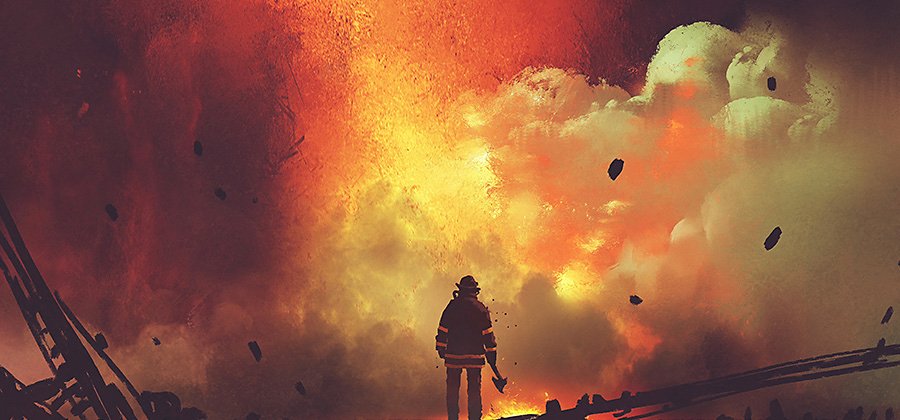
Light your fire for drawing flames.
Fire can be tricky to capture in artwork. Whether you want to draw flames on candles or roaring bonfires, getting your blaze just right is all about movement. You can depict a basic candle flame with a simple teardrop shape. “But to instantly make it more realistic,” says illustrator Lucas Elliott, “you have to make it dance.” Explore the tips and guidelines below to draw everything from blazing flames to burning embers.
General tips for illustrating fire.
Drawing simple flames that look convincing is not as complex as it may seem. Fire is a bizarre phenomenon, and adding too much structure or detail can work against you. “You don’t want to overdo it,” says comic book artist Jonathan Case. “You want to focus on making it look almost flat. The flatness indicates to our brains that it’s a bright light source. It’s that magical thing that makes us stare at fire and how alien it is.”
Consider the science of fire.
“The basic physical science of fire is your starting point,” says Case. “You have gases from whatever’s burning escaping and going up in ribbon shapes. Then you have oxygen flowing up around what’s burning and it’s twisting that gas.” Wherever the fire is hottest will be your brightest area, and wherever the wind is blowing is where it will lean.
Avoid perfection.
Fire is organic and imperfect. Steer clear of straight lines and perfectly symmetrical curves. “Fire is one of those things that, no matter what, we cannot control,” says Elliott. “So why should we be able to control it in our artwork? You have to let it do its own thing. If you have flying embers, you need to make them look unorganized.”
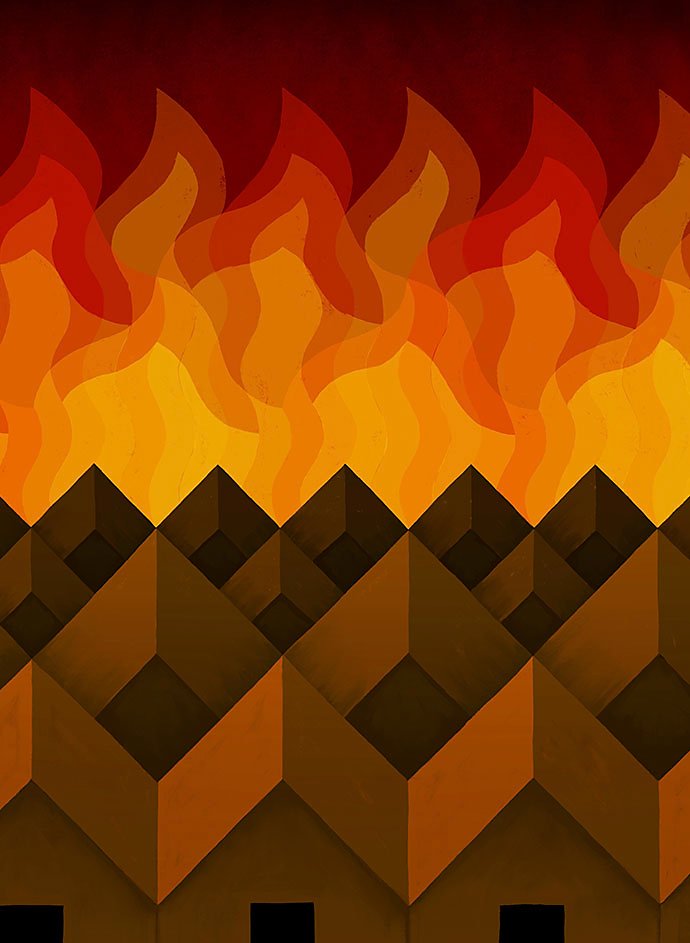
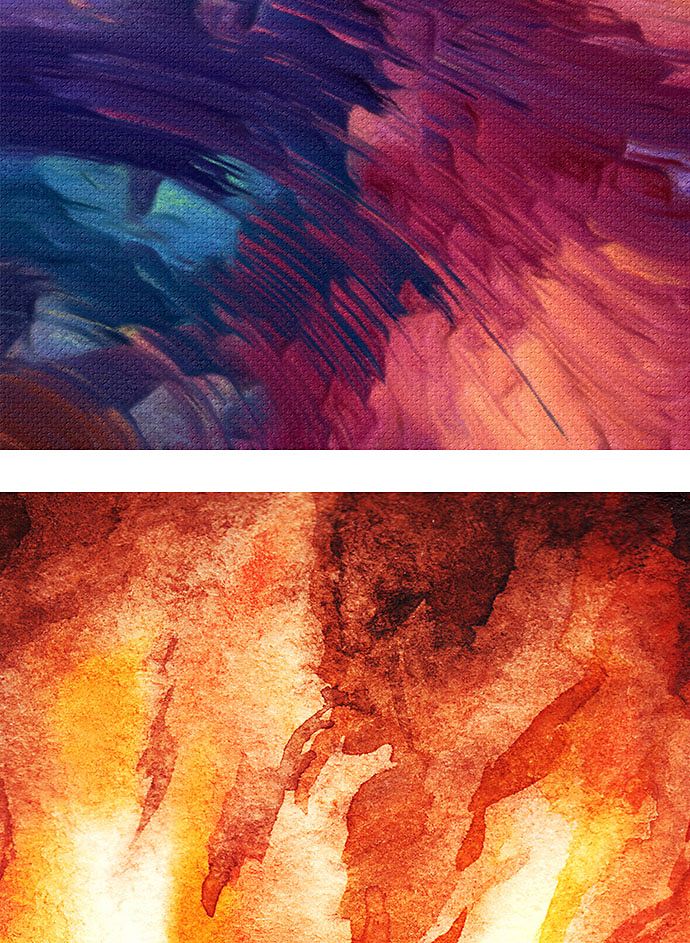
Play with texture.
If you’re drawing digitally, add dimension to your fire with different sizes and textures of brushes. Try a mix of thinner, more opaque lines and thicker, more granulated strokes. “Often, I’ll find myself using grittier ink brushes as opposed to more solid brushes,” says Elliott. “They create a wispiness that I enjoy.”
Let one area take the spotlight.
Focus on one aspect of your fire drawing to keep it intriguing. “If all parts of the fire are equally large and bright, it starts looking more fake,” says Case. “Maybe one large tongue of your flame is going to dominate and have the brightest white.”
Add contrasting shadows.
“Don’t use black to create shadows,” recommends Elliott. Instead, add shading and shadows in different colors that complement the colors of your flames. “Black muddies and dulls the colors it works with. The opposite of yellow is violet,” says Elliott. “Adding a little violet around the edge helps accentuate the yellow.”
How to draw fire in 6 steps.
Follow this step-by-step guide to draw a crackling campfire.
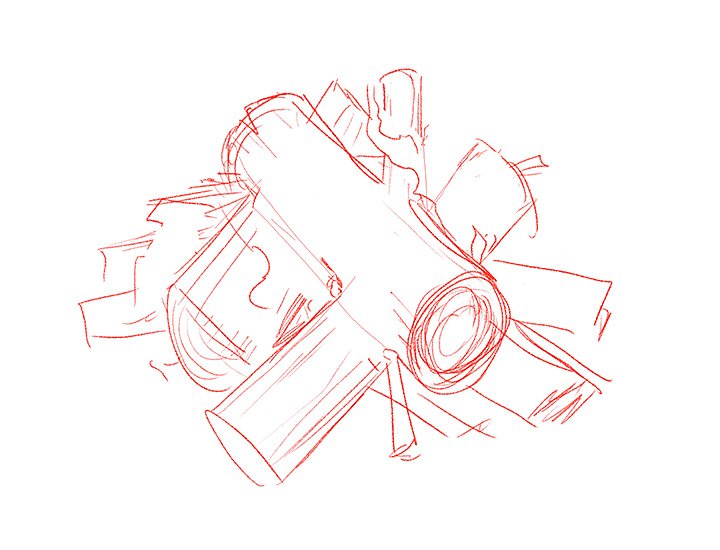
Image by Jonathan Case
Step 1: Draw whatever is on fire.
Start with the base of the fire. For a campfire, draw a few logs.
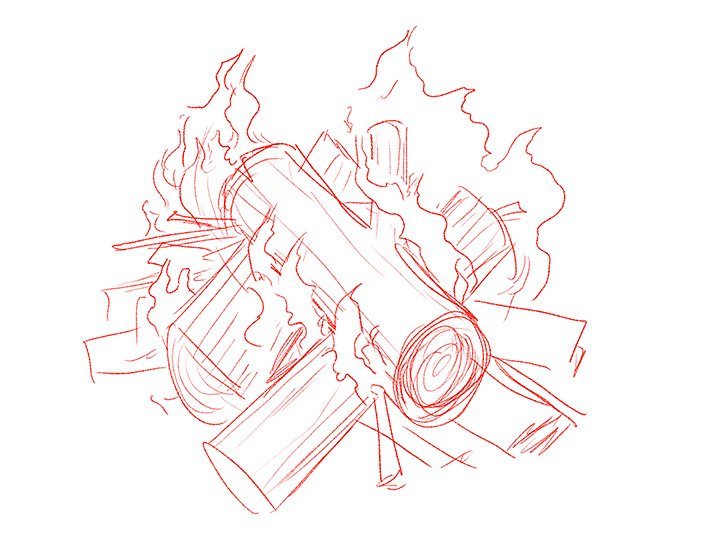
Image by Jonathan Case
Step 2: Draw the indication of flames curving around the logs.
Find the places where the fire would flow up from under the logs and add lines to indicate it twisting with the wind. Pick the spots where the highest peaks of the flames will live. Remember that the lines of real flames change direction randomly. They don’t follow predictable curves.
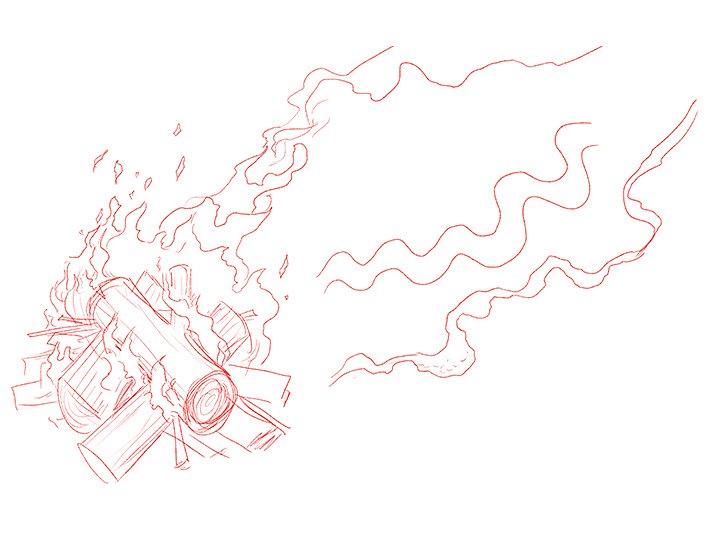
Image by Jonathan Case
Step 3: Keep building layers of flames.
Add more layers of flames and erase where they overlap with the logs. Work on one layer as you sketch digitally, as if you are using a piece of paper. When drawing with an app like Adobe Fresco, it’s much easier to adjust and edit the flames as you go, since digital erasers work much more efficiently than rubber.
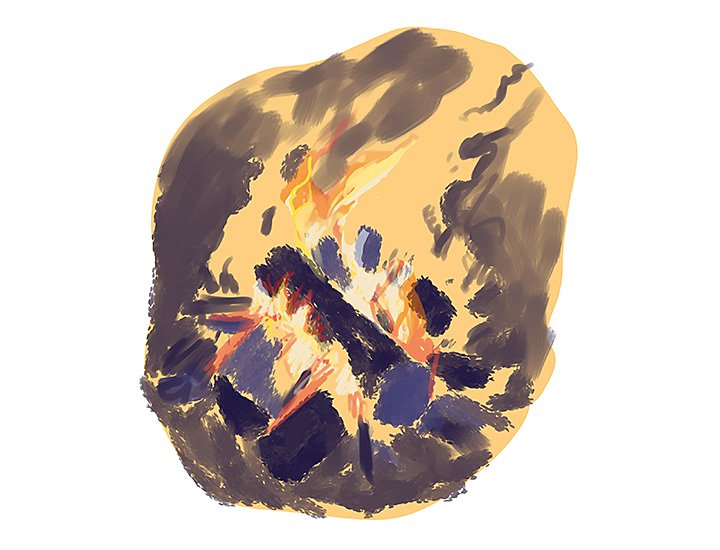
Image by Jonathan Case
Step 4: Add smoke and sparks.
Draw the indication of plumes of smoke rising around your fire. Smoke is lighter and moves differently than fire. Think of how the wind might send it upward. Then add random sparks and embers in the air around your flickering flames.
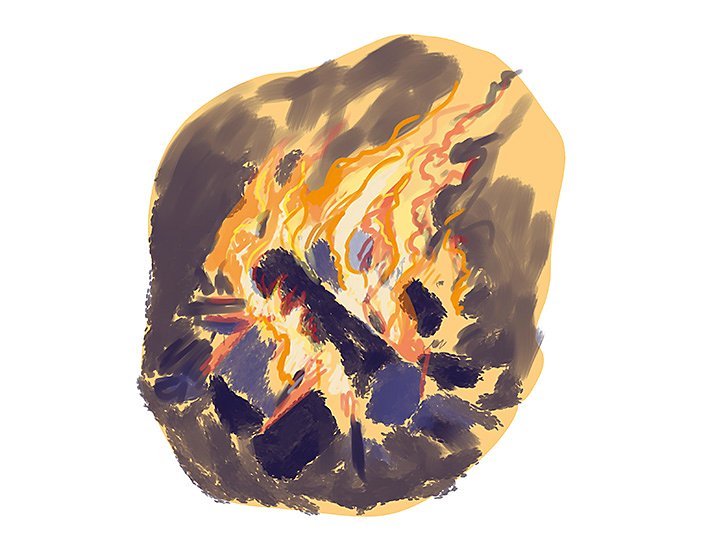
Image by Jonathan Case
Step 5: Color your fire.
Use a dark color for the background and logs to provide contrast with the flames. Add warm colors like red, orange, and yellow to the smoke and flames. The area of your fire near the base and center of the flames should be the brightest and closest to white. A yellow or orange glow on nearby surfaces will give your drawing a special touch and lend an extra note of realism to the scene.
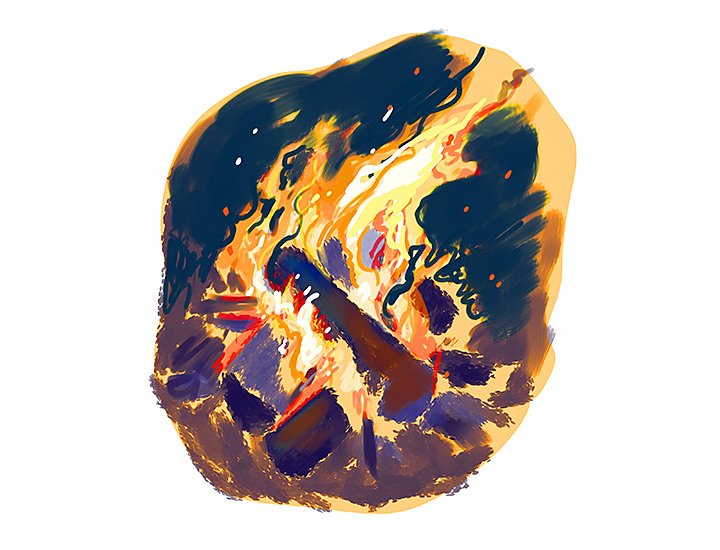
Image by Jonathan Case
Step 6: Use a new layer to tweak the color.
Do the final color edits on a digital flame drawing using new layers. You may want to add more of a certain shade of orange or increase the contrast between the fire and the background of your drawing with an Adjustment Layer. “I like to adjust the opacity on a layer and then work back over the top to unify and harmonize the colors,” says Case.
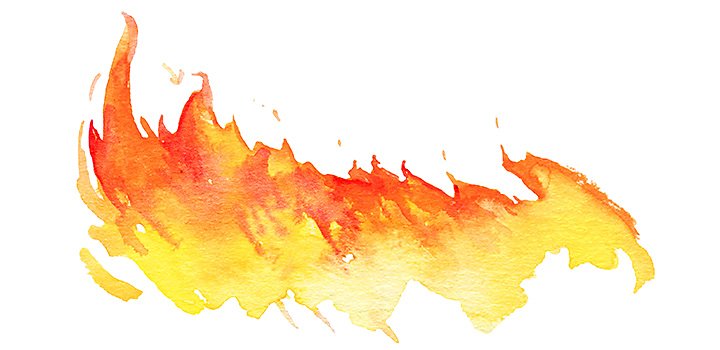
Fan your flames for fire drawing.
“If you want to get comfortable with drawing fire,” says Elliott, “really study it. Look at photos, sit in front of it, and just watch how it dances.” The simple tools in Adobe Fresco mean you can make countless digital pencil drawings and colored paintings of fire until you get it just right. Try out different styles of digital brushes and pencils to see what you like best.
Color fire with digital watercolor brushes.
Ironically, fire and water(colors) do go well together. Use watercolor brushes in Fresco to add hue to your fire drawing in a dynamic way. “Go ahead and color a little bit outside the lines,” says Elliott. “It adds movement.”
Above all, remember to follow your instinct when drawing fire. “Finding little ways to add angularity and make it look more crisp can help it pop. If you just draw a cartoon flame blob, it doesn’t look real. It doesn’t have the soul of fire,” says Case. “And what we’re really trying to do with drawings is find the soul and communicate something about its essence.”
Contributors
You might also be interested in…
Honing your ability to draw faces and heads.
Get tips for drawing better facial features, from realistic portraits to cartoons.
Get tips on how to draw this challenging bit of human anatomy.
How to draw a wolf.
Capture the wild spirit of the wolf with these drawing tips.
How to draw an eyes.
Simple tips for crafting realistic eyes can help you to get better at drawing this emotive feature.



